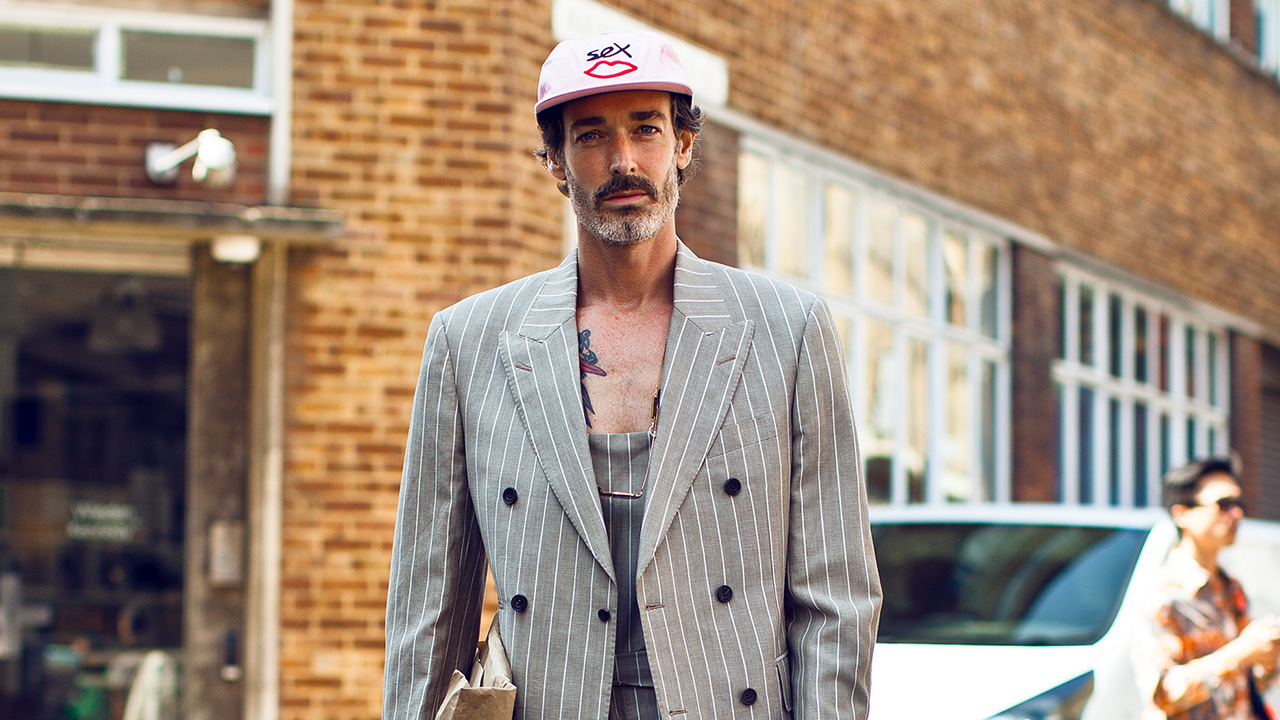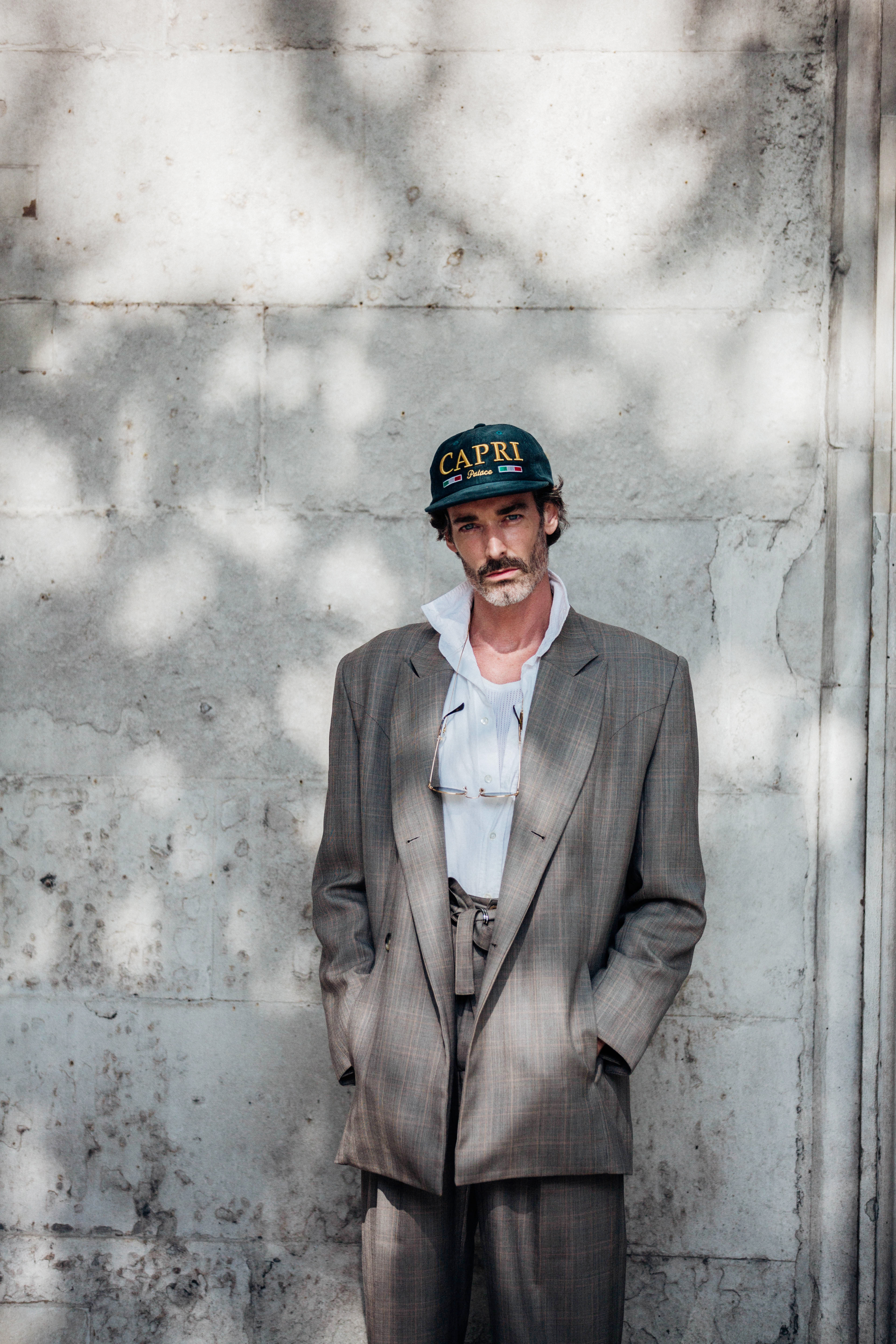Everything

It was by chance that Richard Biedul found his way into the fashion industry. After years of studying, the now-style mogul was a humble solicitor in London, working a humble 9 to 5 life. Scouted by a model agent outside of his office, the 36-year-old has had his life transformed in a matter of seven years. Travelling from New York to Paris and Milan, the London-born model has faced the likes of Berluti, Giorgio Armani and La Perla – just to name a few – and in 2017, he was voted the 47th best dressed man in the world by British GQ.
Now, Biedul is not only a model but a style pioneer. And for an insight into his seemingly bizarre entrance into the elite world of high fashion, ICON’s Roberto Malizia sat down to talk advice, style and social media.
ICON: Richard, you are considered by many as one of the most influential names in menswear for our generation. Inside and outside the runways, what is the biggest accomplishment of your career so far?
Richard Biedul: “When it comes to work, I don’t really have one specific highlight or accomplishment. I’ve been so lucky since I made the move into this industry to travel the globe, to shoot with and walk for some of the world’s leading fashion brands. But if I was pushed … I would have to say, being the first male face of La Perla. It was a very special project for me to be a part of, launching their first global menswear collection, and having the opportunity to work with the likes of Lui Wen, Maria Carla Boscono and Naomi Campbell.
…“off the runway”, I’m very proud of my collaboration with King & Tuckfield. We have launched two sustainable, responsible and ethically manufactured British workwear collections together, and the third is due to launch later this year.”
ICON: You went from a 9-5 job to walk for the biggest names in the fashion industry. What is it like to go from a safe and comfortable zone to the unknown, as our industry is so dynamic and unpredictable? Was it ever on your radar to do what you do now?
RB: “Before the fashion industry I was working as a solicitor in the city of London. Three years of university, one year of post graduate professional studies and two years as a trainee, before a chance encounter with a model agent outside my office changed my life forever.
After I was rather unexpectedly signed as a model, I managed to work both jobs for a short period. Unfortunately my full time profession needed my unwavering attention and the modelling, which I didn’t expect to make a success of suddenly needed the same … so I had a choice to make.
I was 27, nearly 28. I had no experience of the fashion industry what so ever, I wasn’t in great shape, I had long hair and a beard and personally I felt I didn’t represent what a “male model” [is] so, when in the space of my first month I booked jobs for Oliver Spencer; Brioni and Berluti, I was a little shocked. It made me think, “what if I did this full time?… where might it lead?”. So, within six months, I had decided to leave my job and relocate to New York.
It all happened so fast I didn’t have time to think about the change of lifestyle that I would be leading. The lack of structure, that had been so important to my life since I was 18 was gone. I was the master of my own destiny for the first time in my life. This freedom can be both a positive and negative thing.
Over the years there have been times were I’ve struggled to find the right balance between what I should be doing and what I was actually doing. But finally, I’ve managed to work out that you only get out of this industry what you put in. So I try to work hard. I’ve learnt a lot from some of the best people in the industry, and I’m now proud to be an active contributor to an industry I love. Whether it be modelling, writing, art directing or producing.”

ICON: Which of the major fashion houses you’ve represented throughout the years have influenced your personal style the most?
RB: “At the moment, I would have to say Giorgio Armani and more specifically the costume design for a Richard Gere in American Gigalo. The deconstructed, lightweight generous silhouette was revolutionary for the time, but has seen a resurgence in popularity over the last few years. For me a suit shouldn’t be restrictive, it should have a natural flow and drape that excuses laid back luxury.”
ICON: What is a must have item in your wardrobe?
RB: “I’m never without a cap or beanie. My hair is so unruly that I’ve just given up tying to tame it. So the easiest option is to cover it. My go to in the summer is a simple six-panel from Palace or in winter a cashmere watchman from Lock and Co.”
ICON: Were you using social media before starting work in the industry? How impactful is it in your everyday life and career?
RB: “I was using Facebook and Twitter but I wasn’t using Instagram. At that time in my life I didn’t need to communicate visually, so I didn’t feel the need to have an account. This soon changed. I realised it was important to have a medium to display your work to your peers and potential clients. It’s become an invaluable tool to the industry as a whole.
I think at times it can however have a negative effect on the mental health of its users. Especially the younger generation that have grown up knowing no different. Seeking validation from images of yourself must be harming us in some way, there is so much more to life than “likes”…”
ICON: What is the advice you would give to your youngest self?
RB: “Do what makes you happy, not what you think other people would want you to do.”
You can follow ICON’s Street Editor, Roberto Malizia on instagram @this.is.malice